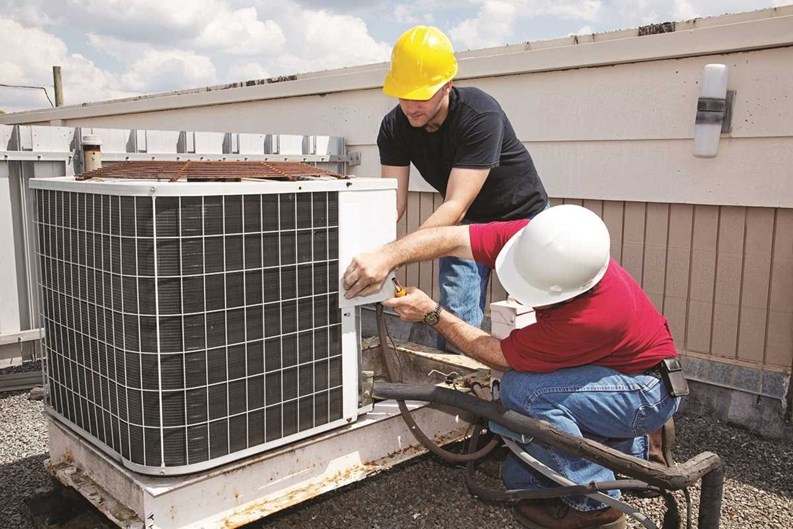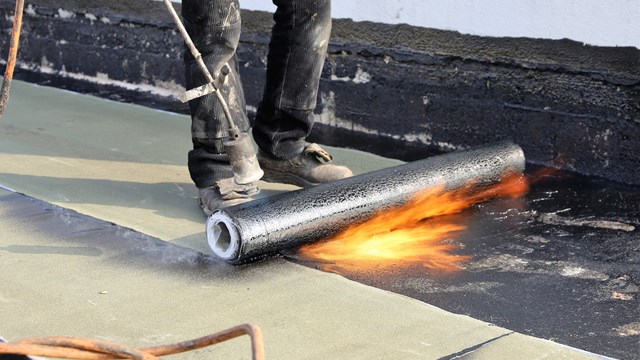In New Jersey, it's common for luxury condos to install recreational facilities on their rooftops—pools, hot tubs, decks and similar areas for socializing. You are also likely to find heating, ventilation and air-conditioning (HVAC) systems, mechanical equipment, cooling towers and communications equipment on the rooftops of New Jersey condominiums.
Older residences may or may not have such structures, but they’re more likely to sprout weak spots where the roof has deteriorated and can’t support traffic. In any of these scenarios, failure to take precautions or make repairs can result in lawsuits, injuries, even death.
Routine Wear & Tear
Sure, the board is wary of costly roof maintenance. Some board members may balk at inspection fees and routine repairs, preferring to think that what’s in front of their eyes is far more important than what's on the roof two or three or 17 floors above. But keep in mind that the weather on top may be frightful, even when it’s 80 degrees and sunny below. Sun can be one of the most damaging influences on rooftop structures.
Neglecting simple, routine checkups could result in a far more expensive outcome than any funds that are saved by ignoring inspections. Industry professionals say that failing to do inspections and keep up repairs is a costly—not to mention risky—business.
“Typically if HVAC equipment is installed correctly on the roof you shouldn’t have to worry about it,” says Mitch Frumkin, PE, RS, CGP, president of Kipcon Engineering in North Brunswick. “It’s not necessarily how the equipment is installed but it’s the people who are working on the roof and servicing the equipment that sometimes causes damage. There should be mats for them to work on. In many instances part of the roof installation there are walkways installed to get to the equipment. Just walking across the roof can cause problems.”
Barry Scymanski, general managers of Alpine Roofing in Morristown aggress with Frumkin that careless maintenance workers can cause roof damage. “Sometimes with an HVAC you get a guy up there like a mechanic, fixing the unit or servicing it and he’ll drop his tool box, that can cause damage,” he says. “Traffic on the roof can lead to wear and tear. On decks there is no wear and tear because there’s slip sheets under the decking or sometimes there’s pedestals.”
Frumkin notes that there are primarily two types of roofs found on New Jersey buildings. “Shingled roofs and pitched roofs are typically on buildings that are one, two and three stories high,” he says. “Once you get above that you’re typically dealing with flat roofs. Those are mainly on mid-rise and high-rise buildings. There are all types of flat roofs out there, but generally they are made out of rubber.”
According to experts, there are numerous ways to tell if a roof has been compromised.
“If there is a tear in the membrane you will see a leak. On a roof system when they are getting up there in age they will start to crack,” says Scymanski. “They call it alligator backing. That’s when the roof starts to dry out and it splits in vein style cracks. It won’t puncture the roof. It means the top surface has failed and then you get that alligator backing. You see this primarily in modified rubber or a hot tar roof.”
“We do roof inspections with infrared cameras,” says Dave Markfred, president of Lake Industrial Services Inc. in Union City. “We use infrared cameras to go up and identify what sections of the roof need work. It shows the thermal differences in temperature. There is usually a different temperature in the dry areas.”
Preventative Maintenance
Lack of attention to roof maintenance, especially the loose ends, is a threat to safety, as well as the condition of the roof overall. Preventative maintenance is especially important in New Jersey due to heavy snow, intense summer heat, the occasional hurricane as well as other nasty weather conditions that often batter the state’s rooftops.
“To put it in a nutshell you need to check areas that are around doorways or areas where a roof meets a doorway. You might have to add some caulk or some metal flashings. It’s the same with a parapet wall,” says Scymanski. “In terms of a penthouse terrace or even a balcony terrace, when you’re at the end of it and the roof swoops up into a wall then you have a cap on top of it and you have a coping cap. That area where the coping cap meets, those areas you need to pay special attention to because they need a sealant and caulking. You have to make sure that the metal flashings are secured areas because the wind can do some damage. You have to make sure the flashings are secured.”
“If roofs aren’t properly maintained it could lead to seams failing prematurely and rotting,” say Markfred. “Tar roofs can rot especially quickly so you have to keep a close eye on those.”
“The spring and the fall are important times for maintaining roofs,” says Scymanski. “In the fall it’s important to remove leaves. Memorial Day is when you get all of the seed off of the roof, that’s the last week you should do it. Also if there are construction sites nearby or next door and if any of the debris falls on a drain or over a drain you could get back up of water that can’t exit the roof. In the wintertime you can have an ice back up and have the water coming in through and HVAC curb, where the unit sits on a platform.”
Experts note that it is imperative to have semi-annual roof inspections complete with an inspection report and photos indicating the condition of the roof. This report could also be used to demonstrate the condition of the roof should a storm event occur and cause damage. The owner could provide this documentation to their insurance carrier when filing a claim.
Water, Water Everywhere
Experts note that building managers and residents should be aware of standing water. It’s called ponding water because it forms a pond. Bacteria or animal life could thrive in such an environment. Areas where water has been standing for an extended period of time will leave a black stain, so those are areas that should be checked first.
“In the summertime you can get water ponding up too high,” says Scymanski. “That could lead to a vent pipe that could lead to a host of problems.”
Experts agree that safety codes address many possibilities for calamity. Ignoring the codes are hazardous to more than a board’s budget, it’s also a life-and-death responsibility. Whenever workers are on a roof they must follow OSHA [Occupational Safety & Health Administration] guidelines.
OSHA’s mission is to assure safe and healthful working conditions for working men and women by setting and enforcing standards and by providing training, outreach, education and assistance. The OSHA Health Act allows OSHA to issue workplace health and safety regulations. Those regulations include limits on chemical exposure, employee access to information, requirements for the use of personal protective equipment, and requirements for safety procedures.
Most roofing manufacturers require the owner to perform two inspections of the roofing system each year and perform necessary maintenance as a condition of their warranty. Clearing debris from the roof drains to ensure that the roof drains are working as designed and maintaining items such as pitch-pans that require periodic maintenance are generally the responsibility of the owner.
There is a strong chance that people will continue to go on the roof whether to socialize on a nice evening, get some fresh air, or to take in water views. To avoid lawsuits (or worse), it's up to boards and managers to make sure their rooftop equipment and social spaces are safe and well-maintained.
Ann Connery Frantz is a freelance writer and a contributor to The New Jersey Cooperator. Staff writer Christy Smith-Sloman contributed to this article.







Leave a Comment